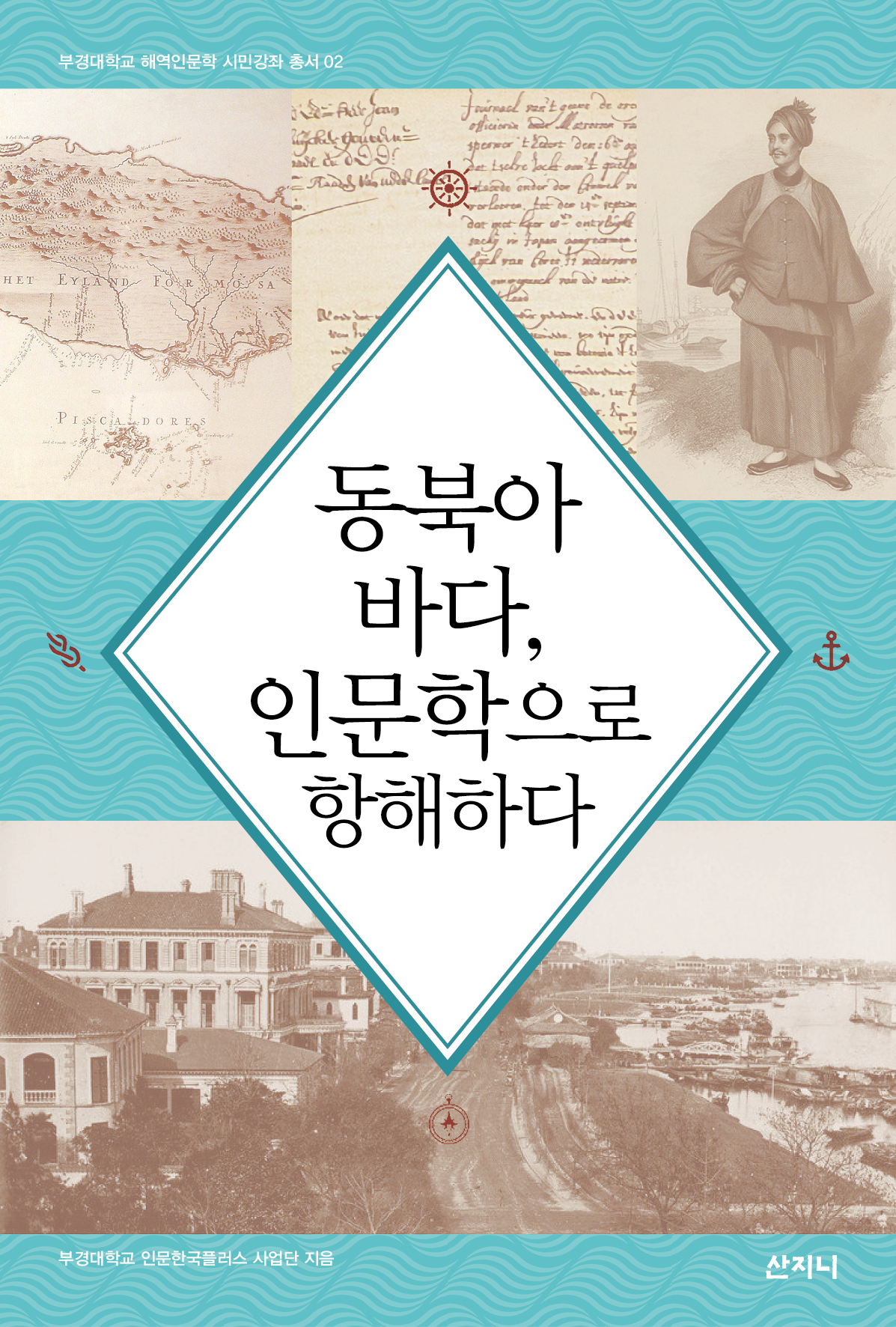
Sailing the Northeast Asian Sea in the Boat of the Humanities
Pukyung National University HK+ business group
| Pages | 288 |
|---|---|
| Dimensions | 152*225 |
| ISBN | 978-89-6545-656-8 03900 |
| Price | 20,000KRW |
| Date | May 2020 |
| Contents | History |
Examining the knowledge, human, and cultural exchanges that took place in the Northeast Asian sea during modern times, from the perspective of human and cultural networks.
The sea routes in Northeast Asia were pioneered by merchants from the West in an attempt to engage in trade with East Asian countries. The Opium Wars, which signaled the beginning of the modern era in the region, were also the result of trade-related frictions between merchants. Chapter 1 of this book investigates the opening of ports that began the human and cultural networks, as well as the “instances of contact” before that.
Chapter 2 introduces the first intellectuals to utilize these networks in the Northeast Asian seas. Missionaries as mediators between eastern and western civilizations; Sugita Genpaku, who led the development of modern medicine in Japan after adopting rangaku; and students who went to the West to learn about modern studies… This chapter provides everything about the interesting networks that intellectuals had through the modern Northeast Asian seas. It also discusses the unfortunate fact that Western studies failed to blossom in the 17th century Joseon Dynasty due to disinterest among intellects, and that the country could have been ushered into the modern era faster if it had not been for the hesitant attitude of Susinsa (Joseon’s diplomatic corps).
Intellectuals were not the only people who used the Northeast Asian sea ro utes. There were other networks among those who settled in foreign lands, carrying dreams of their own and of their families. Chapter 3 covers diverse episodes related to the diaspora in the region. The story of Korean residents in Japan, in particular, is worth taking a look at as a classic example of the diaspora that happened across the Northeast Asian seas.
People’s exchanges leave behind cultures. Chapter 4 delves into languages, food, and entertainment passed through exchanges in the region. Pork cutlets and bread were brought to Korea from the West through Japan, and the Japanese and Korean languages reveal traces of other countries. As such, the book demonstrates how the human and cultural networks in the Northeast Asian waters is still closely related to our everyday life.
Chapter 5 offers colorful stories of Shanghai, one of the most vibrant coastal cities in Northeast Asia. As the most dynamic city in the area during modern times, it provided the backdrop to the Opium Wars, the independence army, and martial arts novels and movies. The chapter looks back on the modern history of the region by studying the fatally charming city, where maritime and continental civilizations clashed. It also goes over the geological and historical significance of “islands” such as Hansan-do, Wan-do, and Jeju-do, all of which play an important role in determining maritime boundaries but are easily neglected in studies.
